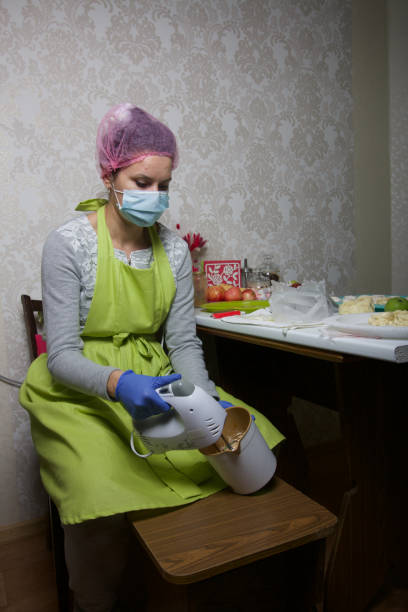
Sewing face masks are desperately needed in American Hospitals to stop the spread of COVID-19.
Many people are now wearing homemade masks in an effort to be safe.
While they may look cute, homemade masques can be a sign of both positive social change and serious social failures.
According to the American Center for Disease Control, homemade masks should only be used as a last option.
Modern medical masks
In France in 189,7, the first surgical masks were used. However, it was not until 191,0, when the Great Manchurian Plague epidemic occurred in Chin, that medical staff and their patients began to wear PPE to stop the spread of the disease.
During the 1918 Spanish flu outbreak, masks were made mandatory for Australian doctors. Gravediggers and other workers soon wore masks.
Read more: How Australia’s Response to the Spanish Flu of 1919 Sounds Warnings on Dealing with Coronavirus.
Deadly virus outbreaks in the last 20 years, including SARS in 2003, Swine Flu in 200,9, and Ebola in 201,4, have meant images of the general public wearing medical and homemade PPE to combat the spread of deadly viruses are now commonplace.
The costume departments of medical dramas such as Grey’s Anatomy donated protective equipment to hospitals. Costume Designers Guild from Hollywood and costumiers of the Bavarian State Opera are both sewing masks.
The US fashion labels Christian Siriano and Don Charneyy have started to manufacture PPE. Kering, a French luxury group, will supply three million surgical face masks to France. Gucci will produce 1.1 million surgical masks for Italy.
Making masks can help people who are self-isolating feel as if they’re fighting COVID-19. To meet this challenge, crafting communities such as Sew The Curve Flat were formed.
Masks are made according to patterns and standards. Although these are widely distributed, craft groups still receive suggestions from people who wish to “improve” the designs.
Even minor changes in mask design can make it unusable.
Does it work?
There is contradictory research on the effectiveness of homemade masks. There are conflicting studies on the efficacy of homemade masks. Medical staff agree that homemade masks can be more effective than nothing in treating patients.
Crafters must adhere to specifications. The best masks made at home are those with a tight-weave fabric, a moisture-impermeable layer, or a pocket that can hold a HEPA filter. The scarf you wrap around your head won’t work.
Face masks are not recommended to the public. They can also be harmful because people tend to overestimate their level of protection and ignore social distancing and hand washing.
A mask will only be useful to you if you already have a cold, as it slows the spread of germs.
If you decide to wear a face mask, Anna Davies of the University of Cambridge advises that it should be tightly fitting over your nose and mouth. It’s not allowed to touch or remove a mask when you are wearing it. The show must be disposed of properly or washed as soon as possible after it gets wet. It is important to wash your hands before and after you handle it.
You could contract coronavirus if you don’t follow these precautions.
What next?
The Australian Army is assisting in running three shifts round the clock at the Med-Con Factory near Shepparton to increase production.
The Social Studio in Melbourne has shifted its production from fashionable scrubs to scrubs that are available at low prices.
Despite this, hospitals struggle with limited resources. They also fear further shortages of PPE.
Wearing homemade masks is not about their effectiveness but rather their ability to signal a collective effort toward safety and security in these uncertain times.
But seeing desperate hospital staff wearing homemade masks that afford little protection is also a powerful symbol of the need to transform our societies to become more fair and equitable.
COVID-19 will continue to be a problem as long as hospitals are unable to provide the necessary PPE. We must leave these stocks of essential PPE to medical and auxiliary personnel.
Hand washing and social distancing are the most effective ways to stop the spread of the disease and protect yourself.
